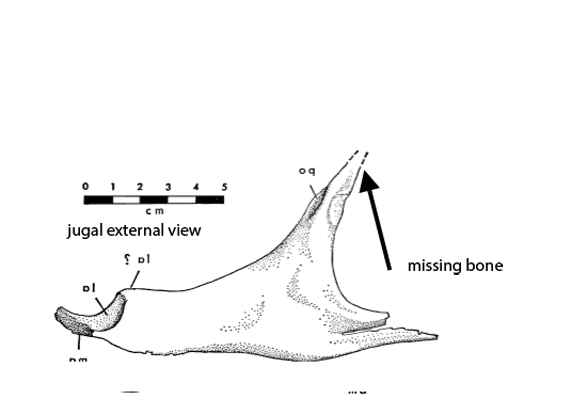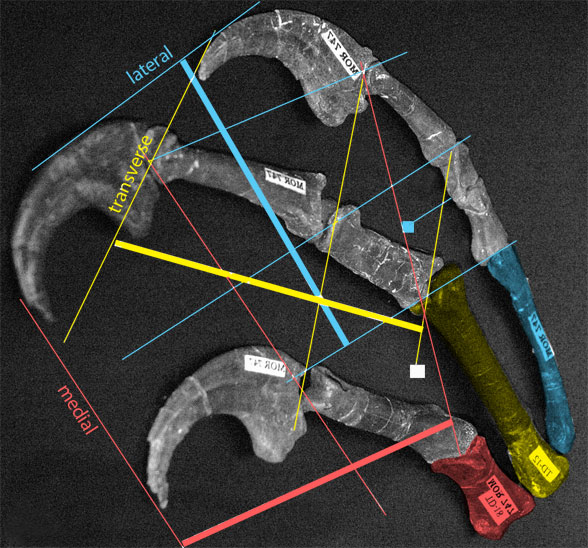This is the dinosaur that started the dinosaur renaissance.
Deinonychus antirrhopus (Ostrom 1969, Early Cretaceous, Figs 1–4) had the first ‘killer’ claw, a tendon stiffened tail and an Archaeopteryx-like manus (hand). These traits indicated a highly active, likely warm-blooded predator, more like an osprey (Pandion), than a Komodo dragon (Varanus).

Here
in the large reptile tree (LRT, 2297 taxa) Deinonychus nests at the base of the Velociraptor clade, about where everyone else nested it.



Distinct from tested relatives
the orbit of Deinonychus (Fig 2) is deeper than wide and not wider than the post-orbital length of the skull. Note the long jugal-squamosal (cyan-magenta) contact is also distinct.
PILs
(parallel interphalangeal lines) can be drawn through most, but not all of the phalangeal joints of the hand (Fig 3) and foot (Fig 4).

In the LRT Deinonychus is derived from
Late Jurassic Ornitholestes and Late Jurassic Sciurumimus, neither of which had a ‘killer’ claw nor a chevron-tendon-stiffened tail.
References
Ostrom JH 1970. Stratigraphy and paleontology of the Cloverly Formation (Lower Cretaceous) of the Bighorn Basin area, Wyoming and Montana”. Bulletin of the Peabody Museum of Natural History. 35: 1–234.

